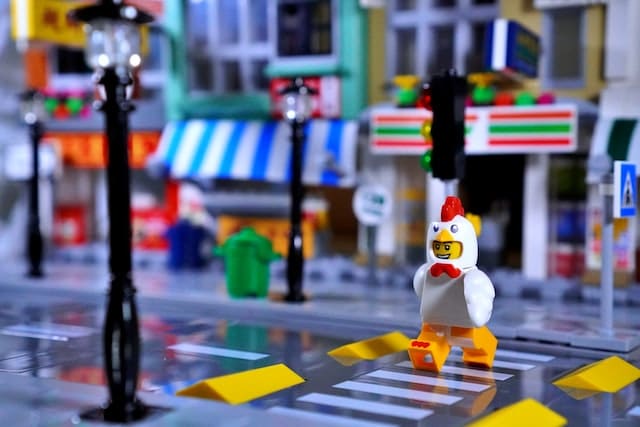When you're crafting a convincing dollhouse diorama scene, paying attention to scale and proportion is key. It's not just about making certain everything fits; it's about creating a believable environment. You'll need to choose authentic materials and craft realistic furniture that aligns perfectly with your chosen scale. Detailing the interior decor and using effective lighting techniques can substantially enhance the overall scene. Incorporating small props and lifelike textures adds depth, making your miniature world feel real. But how do you guarantee all these elements come together seamlessly?
Key Takeaways
- Ensure accurate scale and proportion for all elements to create a cohesive and believable scene.
- Use realistic materials and textures that match full-sized counterparts for enhanced authenticity.
- Incorporate fine details like drawer handles and stitching to add layers of realism.
- Maintain a consistent color scheme and lighting to enhance the scene's overall mood and era.
- Select and position props thoughtfully to tell a story without overcrowding the diorama.
Choosing the Right Scale
When creating a dollhouse diorama scene, choosing the right scale is crucial. You need to decide on the scale before you start assembling your miniature world. The scale determines the proportion of the miniature items to their real-life counterparts. For instance, a common scale like 1:12 means one inch in your diorama equates to one foot in reality. Using a macro lens can help capture the intricate details of your miniatures, making them appear life-sized. Start by thinking about the space you have and the level of detail you want. Smaller scales like 1:24 or even 1:48 allow for more compact scenes but offer less room for intricate details. Larger scales like 1:6 or 1:4 provide more space for detail but require more room for display.
Once you've chosen your scale, stick to it consistently. Mixing scales can break the illusion and make your diorama look jumbled. Use a ruler to measure each piece accurately and confirm it matches your chosen scale. Pay attention to the dimensions of furniture, accessories, and even the figures to maintain harmony in your scene
Selecting Authentic Materials
When selecting materials for your dollhouse diorama, you'll want to focus on realistic textures to enhance the scene's authenticity. Experimenting with different textures and colors can help find the perfect match for your scene. Make sure to match the scale and proportion of the materials to your miniature setting. This attention to detail will make your diorama come to life
Realistic Textures Matter
Achieving a lifelike dollhouse diorama hinges on your choice of materials, and selecting authentic textures is paramount. You've got to think about the tactile experience as much as the visual one. Realistic textures breathe life into your scenes, making them more compelling and believable. Three key points are worth pondering for nailing those textures:
- Natural Fabrics: Use real cotton, linen, or wool for miniature curtains, rugs, and upholstery. Synthetic materials often look too shiny and artificial under close inspection.
- Wood and Stone: Opt for actual wood and stone where possible. Balsa wood is excellent for furniture, while miniature stone tiles can make realistic pathways or walls. You can even distress these materials to add an aged look.
- Everyday Items: Don't overlook the potential of everyday items. Sandpaper can mimic asphalt, and aluminum foil can be crumpled to resemble metal surfaces. Craft stores often carry textured papers and fabrics that can be repurposed creatively.
Scale and Proportion
How do you guarantee your dollhouse diorama looks convincingly real? It all begins with mastering scale and proportion. Accurately scaling down elements from the real world to match your dollhouse's size is vital. Start by choosing a consistent scale, like 1:12 or 1:24, and stick with it. This confirms that all objects, from furniture to tiny accessories, look cohesive and believable.
Next, focus on selecting authentic materials. Miniature objects should mimic their real-life counterparts as closely as possible. For instance, opt for real wood for furniture instead of plastic imitations. Fabrics should resemble those used in actual upholstery, and miniature metal elements should ideally be made of metal. This attention to detail enhances the overall realism.
Proportion is equally important. Even if items are the correct scale, they need to be proportional to each other. A 1:12 scale sofa should not overshadow a 1:12 scale coffee table. Use reference photos of real rooms to guide your placement and proportions.
In short, by adhering to a consistent scale, choosing authentic materials, and verifying proper proportions, you'll create a dollhouse diorama scene that's both convincing and enchanting.
Crafting Realistic Furniture
Creating realistic furniture for your dollhouse diorama scene requires both creativity and attention to detail. It's not just about making miniature pieces but capturing the essence and functionality of real furniture. When you're crafting these tiny treasures, consider these three vital tips:
- Material Selection: Choose materials that mimic the texture and appearance of their full-sized counterparts. For example, use balsa wood for wooden furniture, or fabric scraps for upholstery. The right materials will make your pieces look and feel more authentic. You might also consider the benefits of using soft, diffused light to enhance the presentation of your dollhouse furniture, as it reduces shadows and gives a more natural look.
- Scale Accuracy: Stick to a consistent scale to guarantee all pieces fit together harmoniously. Typically, dollhouse furniture is crafted at a 1:12 scale, meaning one inch in the dollhouse equals one foot in real life. This consistency helps create a believable scene.
- Fine Details: Pay attention to the small details, such as drawer handles, stitching on cushions, or the grain of the wood. These tiny elements add a layer of realism and can make your furniture pieces stand out
Detailing Interior Decor
To make your dollhouse diorama truly stand out, focus on selecting authentic miniature furniture that mirrors real-life pieces. Pay attention to realistic color schemes that match the era or style you're aiming for. These details will bring your scene to life and captivate anyone who views it.
Authentic Miniature Furniture
Authentic miniature furniture is the heart of an enchanting dollhouse diorama scene, transforming tiny spaces into realistic, lived-in environments. You need to choose pieces that not only fit the scale but also reflect a particular era or style to create a cohesive look. Focus on the details—tiny handles on drawers, realistic upholstery, and working doors add a layer of authenticity that mesmerizes viewers.
To make your diorama scene truly convincing, follow these three essential tips:
- Select High-Quality Materials: Opt for wood, metal, and fabric over plastic. These materials hold up better and look more realistic.
- Pay Attention to Scale: Verify that all furniture pieces are to scale with each other and the dollhouse. An oversized chair or undersized table can disrupt the entire scene.
- Incorporate Functional Elements: Functional drawers, doors, and even lights add a dynamic touch, making the scene feel more interactive and alive.
Don't underestimate the power of authentic miniature furniture in bringing your dollhouse diorama to life. With careful selection and attention to detail, you'll create a scene that feels genuinely lived-in, mesmerizing anyone who views it.
Realistic Color Schemes
When it comes to choosing realistic color schemes for your dollhouse diorama, the right palette can transform a miniature space into a convincing and immersive environment. Start by considering the era and style of your dollhouse. If you're aiming for a Victorian theme, rich, dark colors like deep reds, greens, and golds will add authenticity. For a more modern look, consider neutral tones like whites, grays, and soft pastels.
Don't forget to think about how colors interact. Complementary colors can create a balanced and visually pleasing scene. For example, pairing a soft blue wall with a warm, sandy-colored floor can evoke a serene coastal cottage. On the other hand, analogous colors—those next to each other on the color wheel—can create a harmonious and cohesive look.
Textures and finishes also play a vital role. A matte finish can give a vintage feel, while glossy surfaces might be more suitable for contemporary settings. Pay attention to the details, like trim, moldings, and even tiny accessories. They should all fit within your chosen color scheme to maintain consistency.
Lighting Techniques
Effective lighting techniques can transform your dollhouse diorama scene from ordinary to extraordinary. The right lighting not only enhances the realism but also sets the mood and highlights the intricate details of your miniature world. Start by considering the natural light sources you'd find in a real room, like windows and lamps. Mimic these in your diorama to add authenticity.
Here are three key lighting techniques to make your scene more convincing:
- Ambient Lighting: This is the general lighting that illuminates the entire scene. Use small LED strips or miniature ceiling lights to create a balanced, even glow.
- Task Lighting: Highlight specific areas or focal points, like a reading nook or kitchen counter, with tiny desk lamps or pendant lights. This draws attention to the details that you want to stand out.
- Accent Lighting: Add drama and depth by using spotlights or uplights to emphasize textures and features such as brick walls or art pieces.
Experiment with different light intensities and positions to see what brings out the best in your diorama. Remember, the goal is to create a lifelike scene that captures viewers' imaginations.
Incorporating Small Props
Now that you've mastered lighting techniques to enhance your dollhouse diorama, let's focus on incorporating small props to bring your scene to life. Small props add depth and realism, making your diorama more engaging and believable. Start by selecting items that match the theme and period of your scene. For instance, if you're creating a Victorian parlor, include miniature teacups, books, and a delicate vase with flowers.
Scale is vital. Verify your props are proportionate to the dollhouse and each other. Misplaced sizes can disrupt the illusion and draw attention away from your hard work. Pay attention to details like color and materials. Realistic finishes on props, such as a glossy sheen on a porcelain dish or the worn look of an old book, can make a big difference.
Placement matters too. Arrange props in a way that tells a story. A newspaper on a table suggests someone was just reading. A slightly ajar door or an unmade bed can imply recent activity. Don't overcrowd the scene; sometimes, less is more. Thoughtfully chosen and well-placed small props can transform your diorama from a simple model into a convincing, vibrant scene.
Creating Lifelike Textures
Bringing your dollhouse diorama to life hinges on creating lifelike textures that captivate viewers. You need to pay attention to the little details that make a big impact. Start by selecting materials that mimic real-life surfaces. For instance, use fine sandpaper to replicate wood grain or textured paper for stone walls. The goal is to trick the eye into believing these miniatures are the real deal.
Here are three essential techniques to master:
- Layering Paint: Apply multiple layers of paint to achieve depth. Start with a base coat, add a mid-tone, and finish with a dry brush of a lighter color. This technique works wonders for creating aged wood or weathered metal.
- Using Filler Materials: Spackle or modeling paste can add texture to walls and floors. Spread it unevenly to create a worn, natural look. Once it dries, paint over it to blend seamlessly with your diorama.
- Incorporating Natural Elements: Tiny pieces of moss, pebbles, or twigs can enhance realism. These elements bring an organic feel to your scene, making it more convincing.
Positioning for Optimal Angles
Positioning your dollhouse diorama for ideal angles makes all the difference in showcasing its intricate details. Start by considering the primary viewing angle. Most viewers will approach your scene from the front, so align your most engaging elements to face forward. Guarantee key pieces aren't blocked by other objects or walls.
Next, think about the height of the diorama. Eye-level placement guarantees viewers can appreciate the miniature world without straining. If your display is on a table, make sure it's neither too high nor too low. Adjusting the height might involve using risers or adjustable display stands.
Lighting also plays a vital role. Position your diorama to take advantage of natural light or install artificial lighting that casts minimal shadows. Overhead lights can simulate sunlight, while side lighting can highlight textures and depth.
Don't forget about the background. A plain backdrop keeps the focus on your diorama, while a detailed one can add context. Guarantee the background complements, rather than overwhelms, your scene.
At a Glance
To create a convincing dollhouse diorama scene, you need to pay close attention to scale, choose authentic materials, and craft realistic furniture. Detailing the interior decor, using effective lighting techniques, and incorporating small props will bring your miniature world to life. Don't forget to create lifelike textures and position everything for ideal viewing angles. By balancing these elements, you'll immerse viewers in an enchanting, intricately crafted domain they'll never want to leave. To further enhance the realism of your dollhouse diorama, consider adding unique, personalized touches such as tiny framed artwork, patterned rugs, or even miniature books with legible titles. When incorporating dolls into your scene, focus on their placement and expressions to match the mood of the setting. Additionally, making essential edits for doll portraits can elevate the storytelling aspect, ensuring that every captured moment feels natural and cohesive within the miniature world you’ve created.





